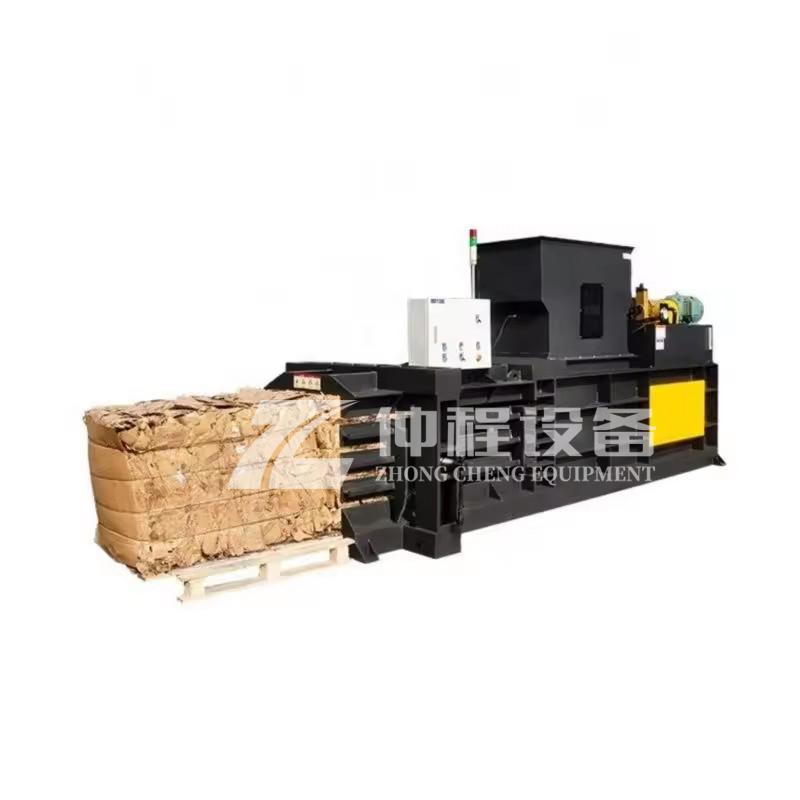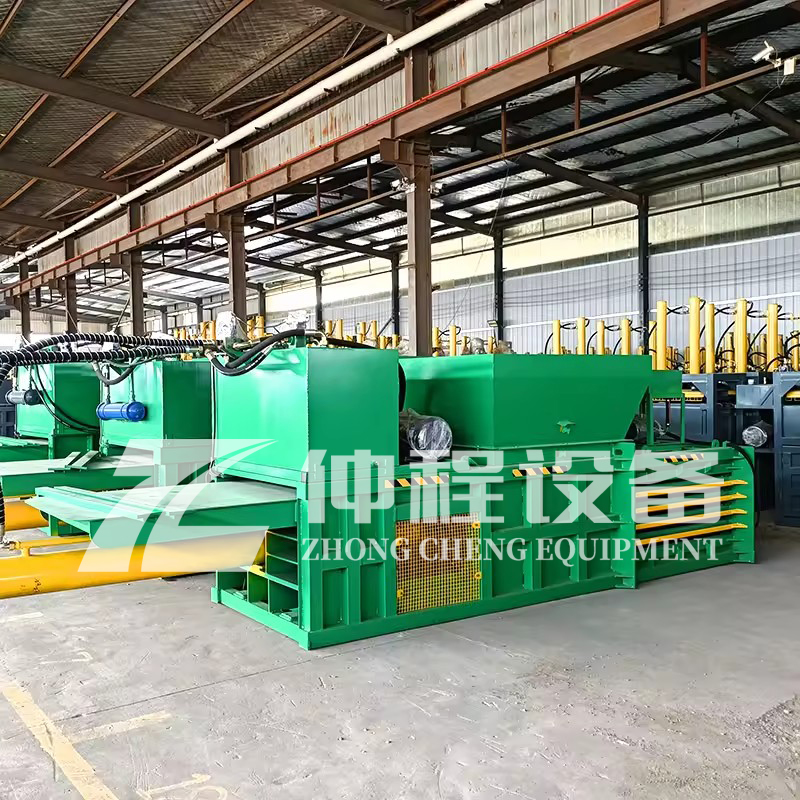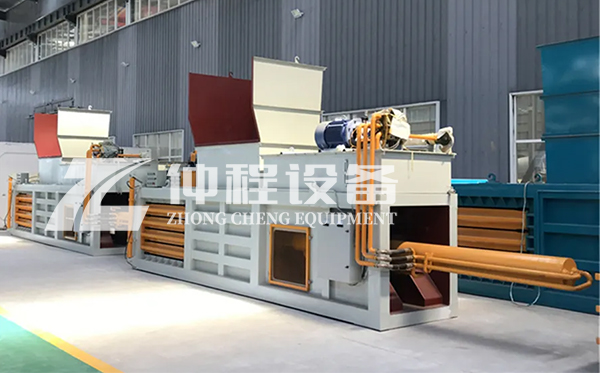Overview of Horizontal Hydraulic Baler
Function Introduction
- Compression and Packaging: The horizontal hydraulic baler is designed to compress loose materials into compact bales, which are then tied or wrapped for easy handling.
- Material Handling: It can handle a wide range of materials such as paper, cardboard, plastic, textiles, and more.
- Automation: Many models feature automatic operations, including material feeding, compression, and ejection of the baled product.
Customizable Settings: Users can adjust settings according to the type of material being processed and the desired density of the final bale.

Advantages
- Efficiency and Speed: High-speed operation allows for quick processing of large volumes of material.
- Space Saving: By significantly reducing the volume of waste or recyclables, it helps in saving storage space.
- Cost Reduction: Reduces transportation costs by minimizing the volume of goods that need to be transported.
- Environmental Friendly: Promotes recycling and reduces the environmental impact associated with waste disposal.
- Safety: Designed with safety features to protect operators during use.
- Versatility: Capable of handling different types of materials, making it suitable for various industries.
Applicable Industries
- Recycling Industry: Ideal for compressing and packaging recyclable materials like paper, plastic, and metals.
- Logistics and Warehousing: Used for compressing boxes, cartons, and other packaging materials to optimize storage and shipping.
- Agriculture: Useful for baling hay, straw, and other agricultural products.
- Manufacturing: Can be employed in manufacturing plants for managing industrial waste and by-products.
Retail and Wholesale Businesses: For managing returns, excess inventory, and packaging waste.

Working Principle of a Hydraulic Baler
A hydraulic baler operates based on the principle of using hydraulic pressure to compress materials into compact bales. The process can be broken down into several key steps:
Material Feeding: Materials, such as paper, cardboard, plastic, or other recyclables, are fed into the chamber of the baler either manually or through an automated system.
Hydraulic Compression:
- Hydraulic Pump Activation: Once the material is in place, a hydraulic pump is activated, which pressurizes the hydraulic fluid.
- Cylinder Movement: This pressurized fluid then forces one or more cylinders (depending on the design) to move, applying significant force to the material within the compression chamber.
- Compression Process: As the cylinder(s) push forward, they compress the material, reducing its volume significantly. The pressure exerted can vary, allowing for adjustment according to the type and density of the material being compressed.
Bale Formation:
- Tying or Wrapping: After the material has been compressed to the desired density, it is typically tied with wire, straps, or wrapped in a film to maintain its shape. Some models may have automatic tying systems, while others require manual intervention.
- Ejection: Once secured, the bale is ejected from the machine, ready for storage or transportation.
Reset and Repeat: Following ejection, the machine resets itself, and the cycle can be repeated for the next batch of materials.

Key Components
- Hydraulic System: Comprises the hydraulic pump, valves, and cylinders, which together provide the necessary force for compression.
- Compression Chamber: Where the material is placed and compressed.
- Control Panel: Allows operators to control the operation, including adjusting the pressure, starting and stopping the machine, and monitoring the process.
Tying Mechanism: Used to secure the baled material, ensuring it retains its form during handling and transport.
-
 Trommel screenTrommel screen, also known as drum screens, are widely used in various industries for sorting and separating materials.Get Quote
Trommel screenTrommel screen, also known as drum screens, are widely used in various industries for sorting and separating materials.Get Quote -
 Crop straw double shaft shreddApplications:Biomass Energy Production: Shredded straw can be used as a feedstock for bioenergy plants to produce electricity or heat.Livestock Feed: Reduced-si...Get Quote
Crop straw double shaft shreddApplications:Biomass Energy Production: Shredded straw can be used as a feedstock for bioenergy plants to produce electricity or heat.Livestock Feed: Reduced-si...Get Quote -
 Zhongcheng Air Drum SeparatorAir drum separators effectively separate lightweight materials (e.g., plastics, paper) from heavier materials (e.g., metals, glass). This high efficiency is cru...Get Quote
Zhongcheng Air Drum SeparatorAir drum separators effectively separate lightweight materials (e.g., plastics, paper) from heavier materials (e.g., metals, glass). This high efficiency is cru...Get Quote
-
2023-01-12Vibrating ScreenVibrating screen is a mechanical device used to separate materials into different sizes and grades by vibrating them through a mesh or screen. This equipment is...
-
2023-01-12Impact CrusherImpact crusher is a type of machine designed to reduce large rocks, ores, and other hard materials into smaller, more manageable pieces. This equipment is widel...
-
2023-01-11Ballistic SeparatorBallistic separators are a crucial component in modern recycling and waste management systems, contributing to more efficient resource recovery and environmenta...
-
2024-05-18Spring Cone CrusherSpring cone crushers are generally used in the medium and fine crushing links of mine crushing, and are mainly used in the secondary crushing and tertiary crush...
-
2024-04-13Vibrating FeederA vibrating feeder is a mechanical device used to convey materials, typically in bulk, from one location to another in a controlled manner. This equipment is co...



